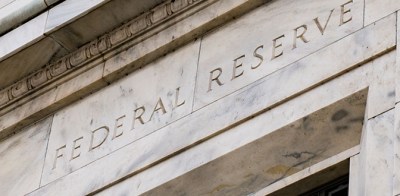A series co-authored by Lara Rhame, Chief U.S. Economist at FS Investments, and Tal Reback, Principal at KKR
LIBOR reform remains on track for the end of 2021, but the transition away from LIBOR is only part of the story. The secured overnight financing rate, or SOFR, has been chosen as LIBOR’s replacement rate in the U.S. The formation of an entirely new rate, and the subsequent creation of a market around that rate, has important ramifications for how products and financial markets will handle benchmark reform. We do a deep dive into SOFR—from its characteristics to how the market is developing—and track how SOFR is evolving from an interest rate into a robust financial benchmark.
Key takeaways
- The transition away from LIBOR is a global endeavor; in the U.S., the replacement rate will be SOFR, which is a fundamentally different rate from LIBOR.
- For SOFR, the rate, to become SOFR, the robust financial benchmark, market participants must be comfortable issuing debt, transacting in derivatives, and investing in products linked to SOFR.
- Issuance of SOFR-linked debt has continued to grow, with over $800 billion having been issued since mid-2018.
- Building up liquidity in SOFR derivatives remains a key goal and could be aided by two recent catalysts.
SOFR, the rate
Solving the puzzle of LIBOR reform is rapidly shifting toward the tactical need to incorporate the new U.S. benchmark rate, SOFR, into markets composed of trillions of dollars of financial products. Given how ubiquitous LIBOR remains, the SOFR market has big shoes to fill. Yet this market is still relatively young. The Alternative Reference Rates Committee (ARRC), a group set up by the Federal Reserve to lead the transition away from LIBOR, announced on June 22, 2017, its preference to use a rate based on the deeply liquid Treasury repurchase agreement (repo) market. Thus was birthed SOFR, which was first published by the New York Fed on April 3, 2018, just two and a half years ago.
SOFR tracks the cost of funds in the overnight Treasury repo market, where many different institutions go to borrow short-term funds, pledging Treasury securities as collateral. The underlying market that SOFR tracks is incredibly large and liquid, with daily average transactions of almost $1 trillion per day over the last three years.¹ Even in times of financial market volatility, including the acute dislocation of early 2020, the repo market remained impressively liquid. In fact, this challenging period could be interpreted as an important “stress test” of how SOFR could act as a reference rate going forward—and markets can gain confidence since it appears to have passed.
The market underlying SOFR is robust and liquid
Daily volume ($B)

Source: Federal Reserve Bank of New York, as of September 30, 2020.
SOFR differs from LIBOR in several important ways. First, as mentioned, SOFR is entirely transaction based, while LIBOR is increasingly calculated using model-based approximations due to the lack of underlying transaction volume in the interbank lending market. Second, SOFR is a risk-free rate, while LIBOR incorporates banks’ credit and liquidity risks. Third, SOFR is a collateralized rate, meaning that a lender has the right to retain the Treasury collateral in the event of a default, while LIBOR is uncollateralized. Finally, LIBOR is quoted in different tenors, from overnight to 1 year, while SOFR is only quoted on an overnight basis for now. (We address the developing SOFR futures market later in this note.)
In times of general market calm, SOFR has tended to trade 20–50 bps below 3-month LIBOR, reflecting the credit and liquidity risks inherent in the latter rate.
Of course, LIBOR and other interbank offered rates (IBORs) are utilized across a wide variety of financial products and currencies, making the transition a global endeavor. LIBOR is currently quoted in five different currencies: USD, EUR, GBP, CHF and JPY. Each jurisdiction has put together a group similar to the ARRC to deal with the transition, and each has begun work to develop a new transaction-based rate to replace LIBOR. Due to a wide variety of factors, including the makeup of domestic financial markets and the preferences of regulators, the rates are not perfectly comparable across currencies. For example, SONIA, which will replace GBP LIBOR, is an unsecured rate, making it fundamentally different from SOFR, a secured rate. This note will focus on SOFR, but it is important to appreciate the global nature of the transition from LIBOR.²
Global replacement rates
| Prior benchmark | Replacement rate | Description | |
|---|---|---|---|
 |
USD LIBOR |
SOFR (Secured Overnight Financing Rate) |
Secured Fully transaction-based Covers multiple areas of Treasury repo market |
 |
EONIA |
ESTR (Euro Short-Term Rate) |
Unsecured Transaction-based Gathered from 52 of Europe’s largest banks |
 |
JPY LIBOR |
TONAR (Tokyo Overnight Average Rate) |
Unsecured Transaction-based |
 |
GBP LIBOR |
SONIA (Sterling Overnight Index Average) |
Unsecured Fully transaction-based Robust underlying market |
 |
CHF LIBOR |
SARON (Swiss Average Overnight) |
Secured Reflects interest paid on overnight repo |
Source: BNY Mellon LIBOR Transition and Readiness Overview, December 2019.
The key differences between SOFR and LIBOR impact how they trade. In times of general market calm, SOFR has tended to trade 20–50 bps below 3‑month LIBOR, reflecting the credit and liquidity risks inherent in the latter rate.³ During times of market stress, such as Q4 2018 and the early days of the COVID-19 pandemic, these risks are perceived to be heightened and LIBOR will usually trade wider than average. We should note that there have been periods when SOFR has seen an unusual spike as the demand for overnight funding exceeded available supply. However, these periods have been transient and don’t have much impact on average daily SOFR, which has been the preferred method for utilizing the rate so far.
Money market rates

Source: Bloomberg Finance, L.P., as of October 31, 2020.
For financial markets, there is more required from a benchmark rate than just an overnight market. LIBOR is currently utilized in myriad financial products, including derivatives, consumer and commercial mortgages, loans and securitizations. It is crucial that a broader SOFR market is developed to support the vast footprint that LIBOR maintains in the marketplace.
SOFR, the benchmark
One way to think of the process of turning SOFR into a robust financial benchmark is like cooking a meal. Imagine you’ve decided to cook your favorite dish. The first steps are to understand which ingredients are needed, acquire the ones you don’t currently have, and measure them all out in precise quantities. This process has been analogous to the creation of SOFR, the interest rate. U.S. officials understood what they wanted to cook (a new benchmark rate), identified the necessary ingredients (a robust, liquid underlying market), and measured them out precisely (repo market data inputs).
While the components are now present, the plan still must be executed; dinner guests will likely be less than enthusiastic about being served raw ingredients. In the case of SOFR, the cooking was always going to be the tricky part. To replace LIBOR, market participants must become comfortable issuing debt, transacting in derivatives and investing in products linked to SOFR. This brings us back to the fact that SOFR is currently quoted only as an overnight rate. A forward term structure could potentially aid debt issuance, and this will require a robust and liquid SOFR futures market. The market is, in a way, developing in backwards fashion. Normally, derivatives markets develop as a way to hedge existing debt, but in this case, both are being formed simultaneously, making the process very iterative.
We’ll now turn to discussing the progress that has been made, and what steps in the cooking process still must be accomplished for the meal to be ready.
SOFR cash market
SOFR-linked debt issuance has risen steadily since mid-2018, with over $800 billion in loans, bonds and floating rate notes (FRNs) issued to date that reference SOFR as the benchmark rate. The majority of that total—about 65%—has been issued by government-sponsored enterprises (GSEs) such as Fannie Mae and the Federal Home Loan Banks (FHLBs). Issuance has picked up significantly since the onset of the pandemic, with March setting a monthly record of $152 billion in new debt.³
SOFR-linked debt issuance ($B)

Source: Bloomberg Finance, L.P., as of September 30, 2020.
In the early days of SOFR, the vast majority of issuance was short term in nature; prior to December 2019, 84% of par-weighted issuance had a maturity of less than 2 years. Since then, more entities—mostly banks—have begun to issue SOFR-linked debt, and the percentage of issuance with maturities of 2 years or fewer has fallen, albeit modestly, to 72%. We believe this increased diversity in issuance terms will help a broader array of issuers get more comfortable referencing SOFR.³
To replace LIBOR, market participants must become comfortable issuing debt, transacting in derivatives and investing in products linked to SOFR.
Additionally, there are multiple milestones on the horizon that should help speed the uptake of SOFR in debt markets. The FHLBs have already ceased entering into new long-dated LIBOR instruments, effective June 30, and Fannie Mae and Freddie Mac will stop accepting LIBOR-linked mortgages by the end of this year. The ARRC is also recommending that new issuance of any LIBOR-linked business loans, CLO securities and derivatives cease in the second half of next year, well ahead of the expected discontinuation of LIBOR.¹
LIBOR transition key events
| Time | Event | Done? |
|---|---|---|
|
June 2020 |
FHLBs cease entering into new long-dated LIBOR instruments |
|
|
October 19, 2020 |
CCPs switch to SOFR discounting |
|
|
October 23, 2020 |
ISDA 2020 IBOR Fallbacks Protocol published |
|
|
Year-end 2020 |
Fannie Mae and Freddie Mac stop accepting LIBOR mortgages |
|
|
January 2021 |
ISDA 2020 IBOR Fallbacks Protocol becomes effective |
|
|
Mid-2021 |
No new LIBOR business loans, securities or derivatives |
|
|
January 2022 |
Expected LIBOR discontinuation |
Source: Federal Reserve Bank of New York.
One factor that has sowed uncertainty for the SOFR cash issuance market is the availability of a term interest rate analogous to 1-month or 3-month LIBOR. In its stead, various averages of daily overnight SOFR have been used. Term rates are desirable for three key reasons: First, they are known at the beginning of an interest period, granting issuers an ability to budget accordingly. Second, they reflect market interest rates for the relevant interest period. Third, they are generally easier for involved parties to operationalize.
The ARRC is also recommending that new issuance of any LIBOR-linked business loans, CLO securities and derivatives cease in the second half of next year, well ahead of the expected discontinuation of LIBOR.
Absent a term rate, the market can employ various methodologies to calculate the interest period payment with daily SOFR as the replacement rate. The market has coalesced around SOFR in arrears, meaning that interest due at the end of an interest period on a SOFR-linked floating rate instrument is based on the daily SOFR rates during the interest period. Compared to a term rate like LIBOR, with which the market is more familiar, using this methodology means an issuer will not know the exact amount of interest due until close to (or at) the end of a period. The ARRC has recommended using certain techniques to help mitigate this issue. These include lockouts, which provide certainty to issuers by “locking in” the same daily rate for a determined number of days at the end of the period, and lookbacks, which provide a cushion at the end of the period by using lagged daily rates. Another option is SOFR in advance, which sets the payment amount at the beginning of the period by using daily SOFR rates from the previous period.
There are also choices to be made between compounded SOFR (more accurately reflects time value of money) and simple average SOFR (easier to operationalize) as well as tenor (30, 60 or 90 days). ISDA identified SOFR compounded in arrears as the methodology for derivatives in its recently released 2020 IBOR Fallbacks Protocol, setting the stage for that to become a market standard approach.
As we mentioned, issuance has by and large been dominated by GSEs, though banks and other corporations have become increasingly active in the SOFR debt market. One event that could help spark further broadening would be the issuance of a SOFR-linked FRN by the U.S. Treasury. This seems like an obvious way to build up liquidity in both SOFR cash and derivatives markets, and the Treasury has noted that it has received mostly positive comments from the market about a potential issuance.⁴ However, we’ve yet to see concrete plans for a Treasury SOFR FRN materialize.
The lack of a term rate in and of itself is not a total impediment to SOFR-referenced issuance; markets have begun the process of incorporating fallback language into new issuance that includes some variation of the daily averaging methodology mentioned above. For example, the LSTA, a trade organization for syndicated loans, has released multiple “concept credit agreements” that lay out best practices for dealing with the transition to SOFR in new loan issuance.⁵ Even setting aside the development of a term rate, developing a deep and liquid derivatives market is a crucial aspect of the transition to SOFR.
SOFR derivatives market
SOFR derivatives began trading shortly after the rate itself was first published—officials understood that building up liquidity in a new market takes time. This process has made significant progress since the first SOFR future traded in May 2018. As you can see below, volume and open interest for 1-month and 3‑month SOFR futures have increased materially alongside increased cash product issuance.³
SOFR futures market activity
Number of contracts

Source: Bloomberg Finance, L.P., as of October 19, 2020.
Of course, it is important to put this data into context. While progress is being made, activity in the SOFR futures market is dwarfed by volumes in the Eurodollar market (which uses LIBOR) and, to a lesser extent, the Fed funds futures market. Each of those markets has a larger and more diverse cash market, which is the natural catalyst for a liquid derivatives market as issuers and investors look to hedge their interest rate exposure. Between 2 million and 3 million contracts are traded daily in the Eurodollar futures market, and Fed funds futures volume sees around 250,000 contracts traded daily; for the SOFR futures market, that number has ranged from 30,000 to 70,000 in 2020.³
SOFR swaps and options have been launched by various exchanges and have seen relatively gradual uptake. During the first half of 2020, SOFR swaps accounted for 0.6% of USD-denominated swap transactions. However, SOFR swap volume has begun to show signs of growth, logging its highest-volume month by notional value in September.⁶ This includes a large 10-year, $500 million swap deal between Unilever and JPMorgan that hedged Unilever’s newly issued bond, one of the first long-term SOFR swaps entered into by a non-financial corporation.3 Progress toward a more robust SOFR derivatives market has gained steam, and two recent market catalysts have helped accelerate the pace of growth increasing the volume and breadth of futures being traded.
While uncertainties remain, we fully expect to see different markets moving away from LIBOR and toward SOFR in the coming quarters.
First, as we wrote in our initial note, Leaving LIBOR: From theoretical to tactical, central clearing houses (CCPs) officially switched over to SOFR discounting for cleared interest rate swaps in mid-October. The move is designed to utilize the cleared swaps market, which comprises around 90% of all interest rate derivatives, to build up liquidity in SOFR derivatives.⁶ The event transfers discounting risk from the Fed funds curve to the SOFR curve, in effect shifting how these products are valued and forcing market participants to engage with SOFR.
The mechanics of this significant shift are meant to expose clients to SOFR gradually. Because the switch in discounting methodology will invariably change the mark-to-market value of a client’s swap, the CCPs automatically booked offsetting basis swaps to mitigate the pricing impact of the switch, in effect making clients whole. The CCPs then ran a voluntary auction allowing clients who so chose to unwind that basis swap, which has the effect of immediately exposing them to SOFR discounting. Activity around the discounting change contributed to elevated SOFR swap volume in October, and although continued growth at that pace is not guaranteed, the act of exposing swap counterparties to SOFR discounting should aid in building momentum for SOFR derivatives.
SOFR swap activity has grown
Monthly notional volume ($B)

Source: Bloomberg Finance, L.P., as of October 31, 2020.
Second, ISDA, which is a trade organization for the over-the-counter (OTC) derivatives market, finalized a protocol on October 23 that will apply fallback language to existing OTC (non-cleared) derivatives contracts. The move will allow parties to incorporate LIBOR transition language seamlessly by amending the 2006 ISDA Definitions, which govern most OTC derivatives transactions. This formalizes the process by which derivatives contracts switch over to SOFR when LIBOR is officially deemed unrepresentative and sets the formula by which the new rate will be calculated. For all LIBOR-based contracts, the replacement rate will be compounded SOFR in arrears plus an adjustment spread: the 5-year historical median difference between SOFR and LIBOR, which is currently about 11 bps for a 1-month tenor and 26 bps for a 3-month tenor. This will ideally lead to further adoption of SOFR in the derivatives market.⁷
While the notional value of the derivatives market dwarfs the size of cash products like loans, FRNs and securitizations, its centralized nature makes the transition somewhat cleaner. Stakeholders clearly understand the importance of building up a SOFR derivatives market and getting participants comfortable hedging SOFR-related risk. Eventually, the goal is for liquidity to build to the point where a SOFR term structure can be developed. While this would be ideal, it may take some time after the transition to SOFR, and our view is that the lack of a term rate will not hold back SOFR-linked debt issuance.
Looking ahead
SOFR and other global replacement rates address the core weakness of LIBOR—the lack of underlying transactions, which has in the past led to volatility and even manipulation. Yet it is important to recognize that while SOFR is the chosen replacement benchmark rate for USD LIBOR, it is a fundamentally different interest rate. SOFR is a risk-free, collateralized interest rate, and therefore it does not fully reflect the credit and liquidity risks inherent in bank funding costs. This means that each market will need to figure out how the pricing of financial products will change due to that difference.
Ultimately, the ARRC decided that the most important characteristic of LIBOR’s replacement would be that it is a 100% transaction-based rate based on a substantial and diverse underlying market. While it may not be a perfect replacement for all constituents, the transition to SOFR remains on schedule, and the COVID-19 crisis has only made it clearer that benchmark reform is necessary to deal with LIBOR’s flaws. The focus is now on building up liquidity in the SOFR derivatives and futures market, facilitating issuance of SOFR-linked debt securities, and ensuring that existing and new contracts incorporate appropriate fallback language.
We believe that the plan laid out by the ARRC will ensure a relatively smooth transition. The official end of LIBOR is barely more than a year away and, as we mentioned in our first note in this series, the transition has truly gone from theoretical to tactical. While uncertainties remain, we fully expect to see different markets moving away from LIBOR and toward SOFR in the coming quarters.



